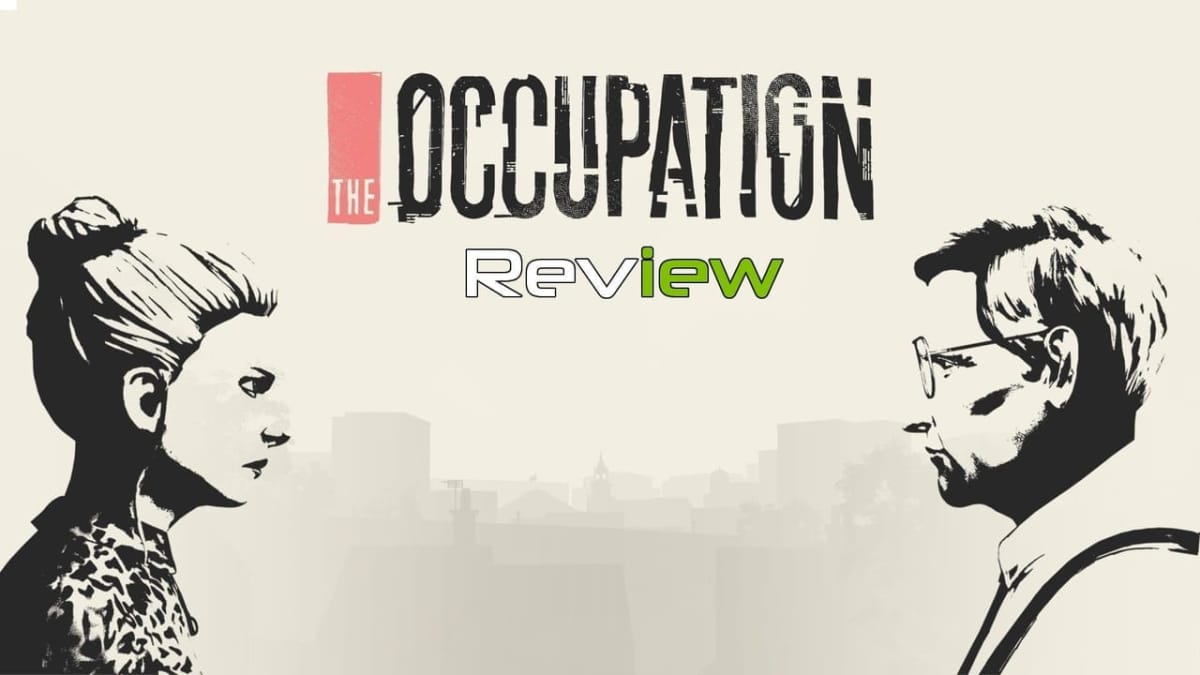The immersive sim is, at its best, a seamless fusion of simulation, adventure, and roleplaying experience. Not exactly a genre in itself, but rather a design philosophy focused on giving the player agency through complex, interlinked systems. The Occupation doesn’t advertise itself as an immersive sim, but the influence is undeniable. Some called it “BioShock Infinite with no combat,” but it will inevitably remind players of the best features of Deus Ex and Dishonored. That is to say, not the mindless gore, but the fine-tuned stealth, the complexity of systems, and, above all, the ample variety of routes in level design.
You are Harvey Miller, an investigative journalist in Turing City, a fictional city in North West England. The name is likely a nod to Alan Turing, and the city itself looks like an alternate history Manchester, which is the headquarters of White Paper Games, the studio behind The Occupation. Right from the introduction, you’ll feel completely immersed in Turing City through an astoundingly detailed art direction. The art style will also inevitably draw comparisons to Dishonored, which is very high praise. Turing City looks and feels as beautiful, grimy, and iconic as Dunwall or even City 17.
The year is 1987. It’s a time of great social unrest in the aftermath of a terrorist attack in England. At the crux of this social unrest is a facility, Bowman Carson, where the attack happened. Bowman Carson now aims to protect the people of England through the Union Act. This is very obviously a veiled reference to Brexit and the current political schism in England. The upper echelon of Bowman Carson claims that their technology can create more jobs, reform national health resources, and relocate illegal immigrants by 1989. At first, this is all very subtle, but it gets a little bit on-the-nose later on.
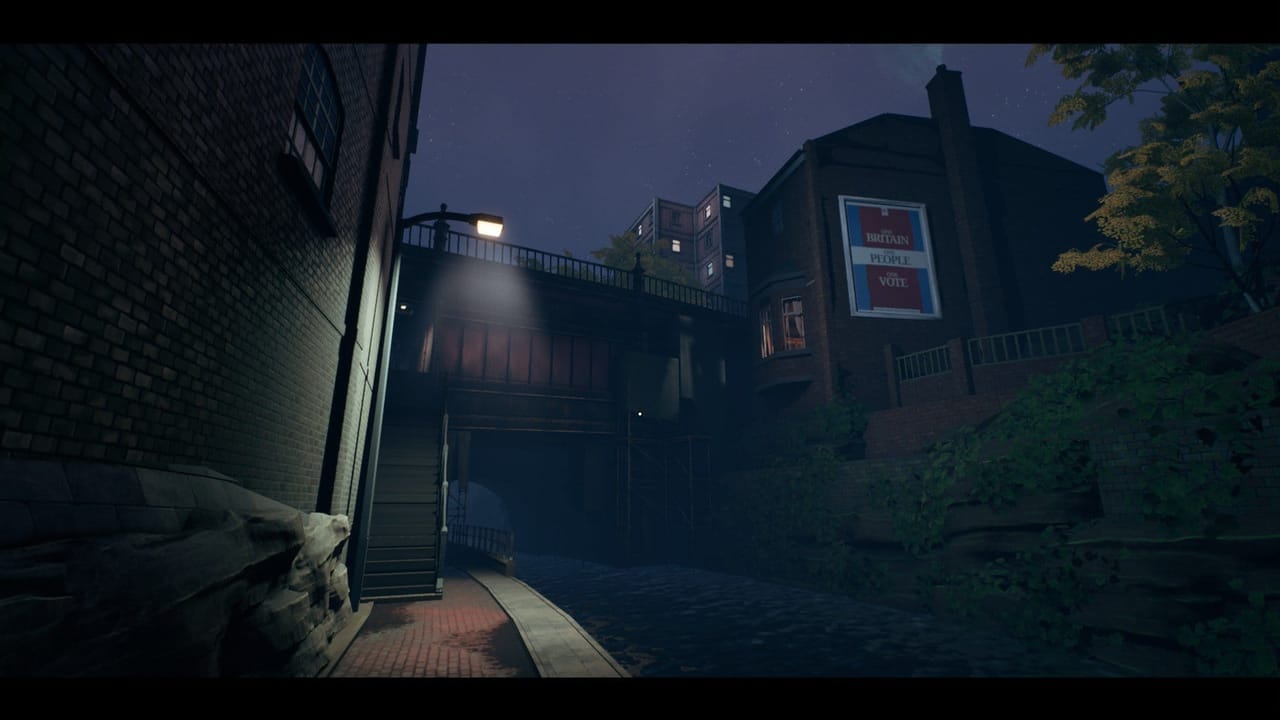
You’ll visit Bowman Carson as Harvey Miller to investigate and interview some of its officials. Arriving an hour early, as per the directives from your editor, you’ll be able to explore three different levels over three main missions. First, you’ll start with a main lead or line of investigation. As you explore, other leads will emerge. Your editor will page you once in a while, and you’ll receive calls and leads. This way you can get a broader and more detailed picture of the inner workings of Bowman Carson. However, you can choose to simply ignore the calls and leads.
Right from the outset, The Occupation perplexes you with the intricacy of its interactions. When you first assume the role of Harvey Miller, you’ll be in his apartment, listening to vinyl and cassettes. When you receive a package, you’ll have to use the controls to rotate and unseal it. Only then can you take out its contents. It takes some getting used to right from the beginning, but it’s mostly an intuitive approach that does maximize immersion, though there aren’t any hand animations.
Bowman Carson is a wild playground for this approach to interaction. There are machines everywhere: computers, faxes, printers. As the perspective centers into computers, you can interact with a variety of diegetic interfaces. You can visualize files and emails, save them into disks, or print them. As an investigative journalist, you need hard evidence. The process to get ahold of it is often messy and complex. This is where the game really gets compelling because it feels so grounded in an intricate realism.
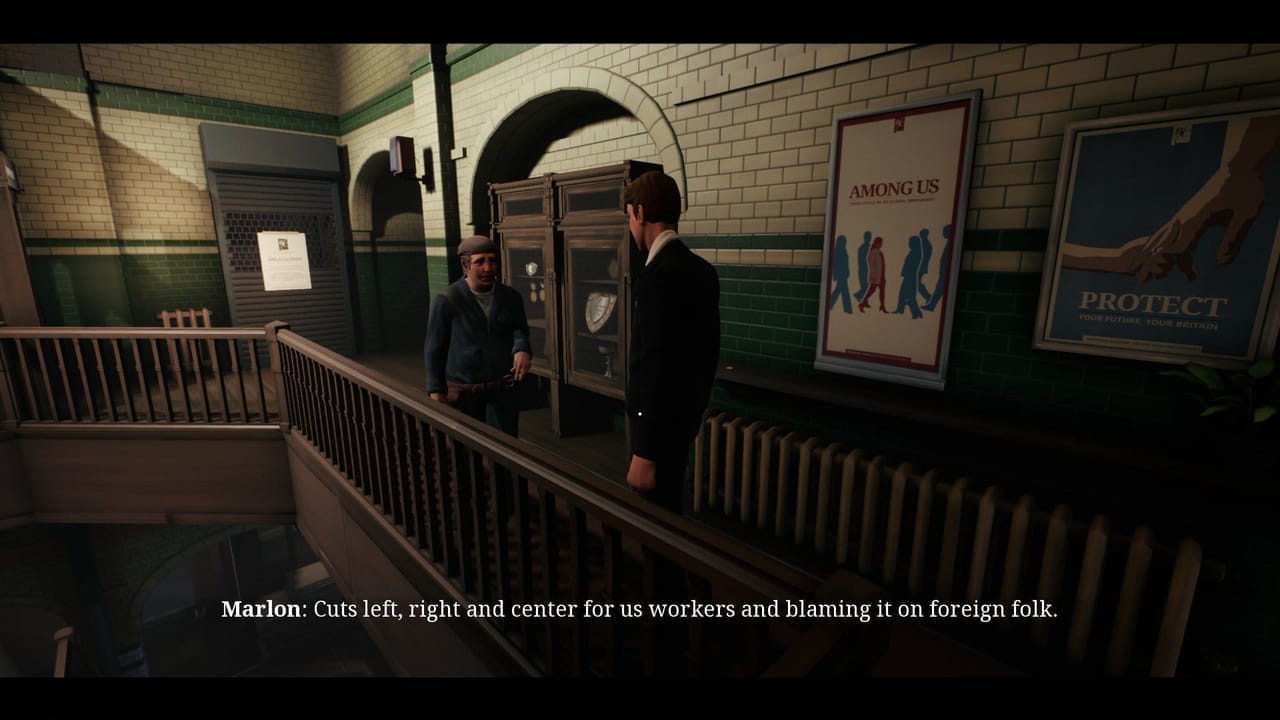
There is a security guard, Steve, watching you most of the time, almost everywhere you go. If you venture into restricted areas and he catches you, he’ll call you out and ask you to leave. The AI can get a bit wacky, but it’s quite effective most of the time. At first, it seems easy to hide from Steve by ducking under tables. As you progress, you’ll find he gets more and more perceptive. At some points, he’ll even crouch and flash his light in your face. His lines and monologues are fairly varied, making him a lively and well-written character.
There are other characters walking around Bowman Carson whom you’ll come across and try to avoid. They won’t be chasing you around like Steve, but they'll be there. In the first two missions, you’ll come across Dan, the head of security, who stays in his office most of the time. You’ll also be able to take advantage of the elderly janitor Marlon, who sometimes opens certain doors to clean. This will sometimes facilitate your stealth schemes. The other higher ranking employees are also fairly interesting and add a lot of texture to the world of Bowman Carson.
The systems and quests felt quite polished. At one point, I thought I had broken the opening cutscene of an interview by coming in through the window instead of the front door. Still, the game managed to bounce back on its own somehow. I didn’t experience any bugs, and this seems extraordinary when you consider how nonlinear the game is. It could be because I tried to go completely undetected. Maybe I didn’t manage to mess around with the systems that much. I still had a lot of fun figuring out the many different routes to accomplish an objective.
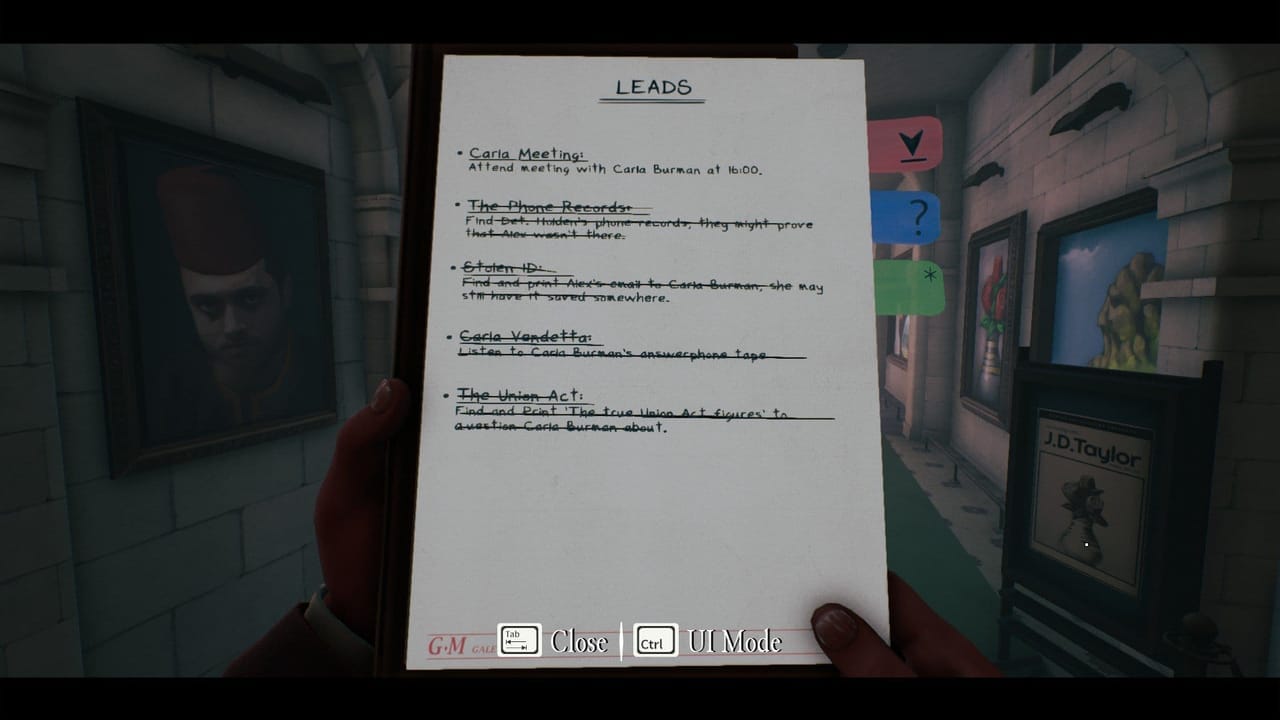
Since you only have one checkpoint at the start of each level, save-scumming is out of the question and stealth will take a lot of reloading and patience. While there is an achievement for completing The Occupation without ever getting spotted out-of-bounds, the game doesn’t actively punish you for it. Steve will just ask you to leave a few times. At some point, he finally has enough, escorting you to the interview with the designated official. The incentive to go for a stealth run is mainly the thrill of being able to extract information undetected.
Adding to the challenge is the fixed-time mechanic. Not only The Occupation takes place in actual real time, but you’ll also have to accomplish everything on schedule. Your editor will page and call you on a public phone. If you’re not there on time, you’ll miss the call and the lead. Time management is of the essence, and you’ll often have to juggle concurrent tasks, such as waiting for the timer in a safe while you copy a file from a computer. Just like in real life, it might feel like there isn’t time to do everything. This kind of clock-watching anxiety adds a lot of emotional investment to the gameplay.
My main gripe was that the movement can get kind of clunky. As in Dishonored, you can sneak a peek to each side through a combination of keys. You can also surmount certain objects and structures. However, you often get stuck trying to get on top of a platform. This can leave you struggling with the controls, especially when you’re crawling through vents and tight passages. Since I only played on keyboard and mouse, I can’t speak for the controller experience.
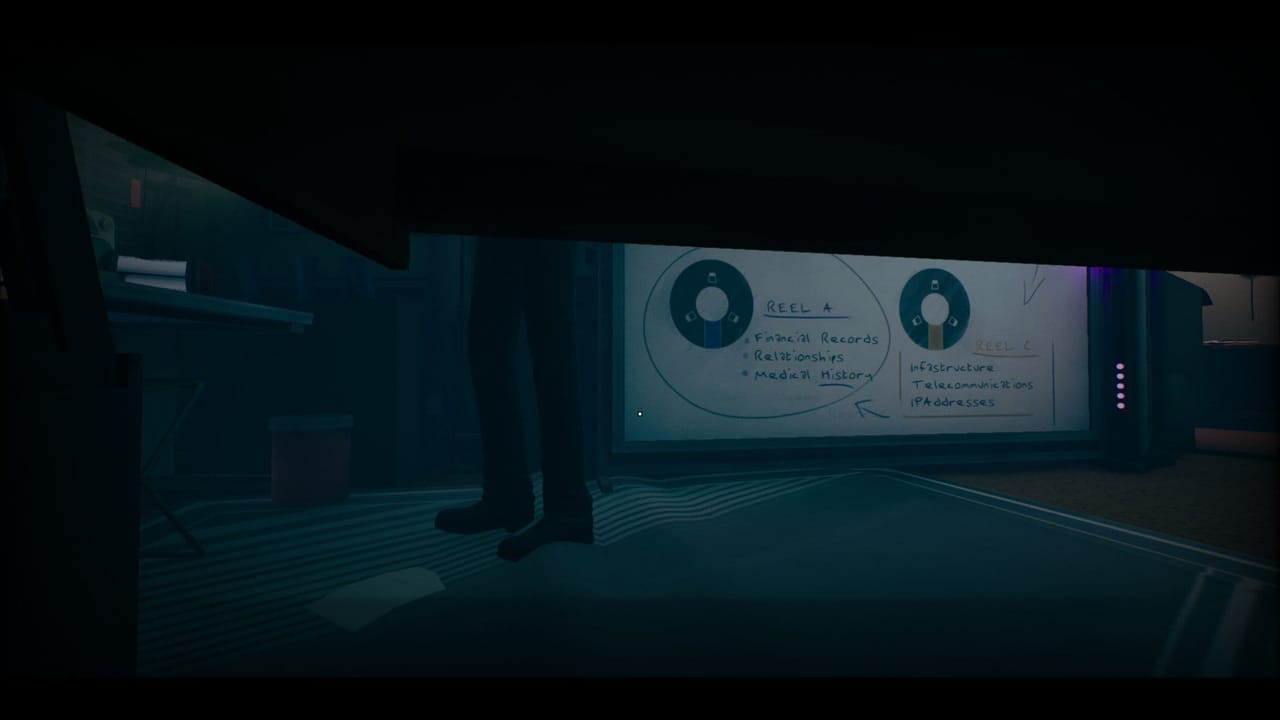
As much fun and immersive as it is, The Occupation is also a highly brainy and strenuous experience. At least on the first forays into a level, everything takes a lot to process. As you familiarize yourself with the level, it’ll get easier. You can often follow a script based on your accumulated experience. Some might find it gets a bit too easy when they realize that door codes and passwords are always the same. If you write it down once, it will work across every playthrough or reload. I can see some players asking for a hardcore mode where the codes and passwords are random for an extra challenge.
I cannot praise the level design enough. While it's a comparatively short game, everything interconnects in a way that adds more substance to the experience as a whole. Spelunking through vents and passages in the walls really gives the game a lot of ambiance and texture. Figuring out ways to prevent a magnetic gate from wiping a disk can also be very stimulating. Using capsules to transfer disks through pneumatic tubes between offices is a really cool display of retrofuturistic technology.
The overall plot is punctuated by cutscenes and shorter missions where you’ll also play as Scarlet Carson, COO of Bowman Carson. She’s a complex, interesting character, and her voice acting is excellent. Most of the voice acting is decent, but there’s a calm intensity as Scarlet reminisces in voice over through the levels. The animation is par for the course in an indie game, a bit stiff, but nothing to scoff at. I really loved the soundtrack, there’s a lot of late-80s style pop and rock to listen to as you collect vinyls and cassettes.
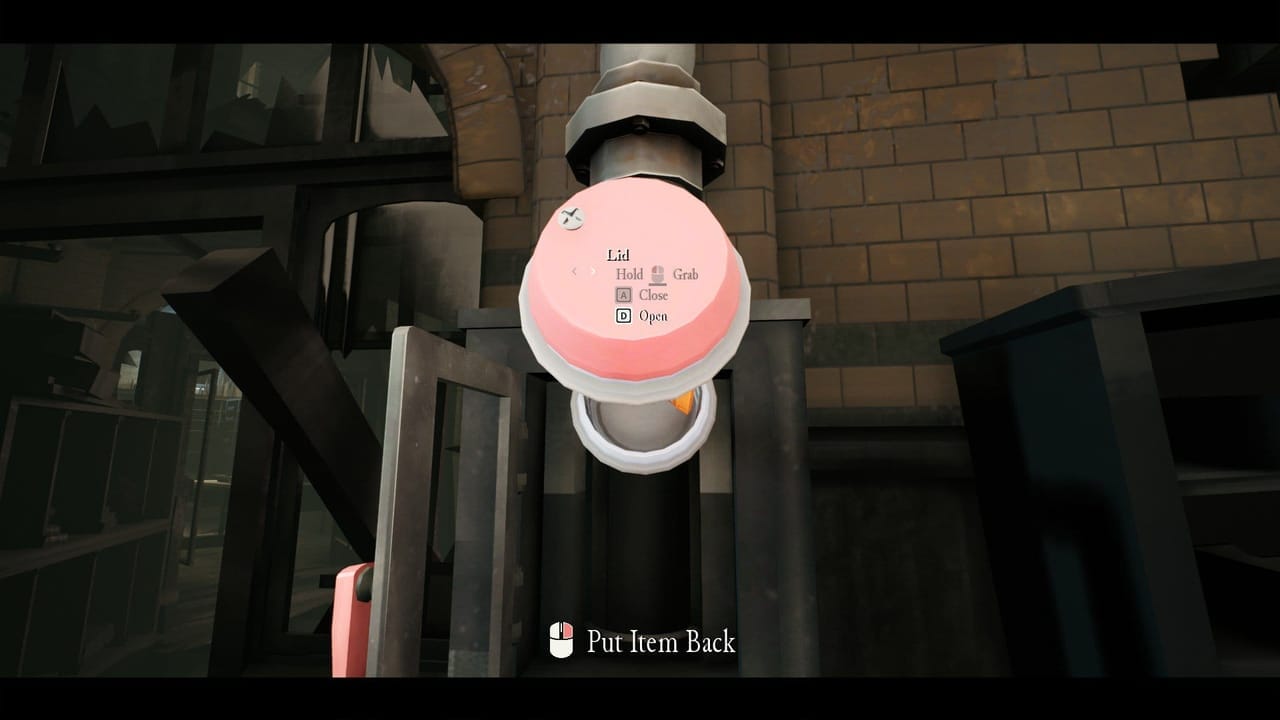
In terms of structure and gameplay, The Occupation may tread the familiar territory of games like Deus Ex and Dishonored, but its innovations are highly subtle and intelligent. It’s a very mature game, not only in its themes and narrative, but especially in its use of the medium. It’s a taut thriller with a complex and multilayered backdrop, allowing players to speculate and connect the dots and patterns. My comprehensive playthrough took a little over 20 hours, and I’m still processing my particular ending.
The Occupation is the second title by White Paper Games, following the somewhat underrated Myst-like Ether One. Both games are ingenious and compelling enough to make me a fan, and I’m eager for more games set in Turing City. You may feel underwhelmed when you finish it, but that’s probably because you’ll be hankering for more missions and levels to unravel and explore. I really hope there will be an expansion or two. The Occupation will hopefully be the first chapter in a series that just might redefine the possibilities of what an immersive sim should accomplish.
TechRaptor reviewed The Occupation on PC via Steam with a code provided by the publisher. It is also available on PlayStation 4 and Xbox One.
Review Summary
The Occupation is a taut investigative simulation and stealth thriller. It’s infused with a realistic and multidimensional approach to mechanics, systems, and level design. This is a must-play for fans of Deus Ex and Dishonored.
(Review Policy)Pros
- Astoundingly Detailed Art Direction
- Complex, Interlinked Systems
- Brainy, Convoluted Narrative
- Immersive Atmosphere and Setting
- Multidimensional Level Design
- Original Interactive Mechanics
Cons
- Sometimes Clunky Controls
- Gets Easier As You Progress
Have a tip, or want to point out something we missed? Leave a Comment or e-mail us at tips@techraptor.net
